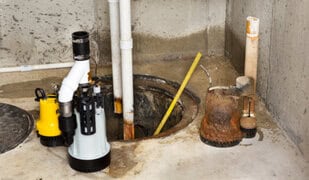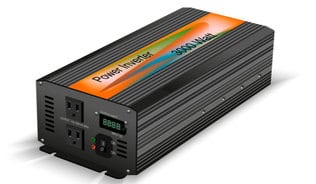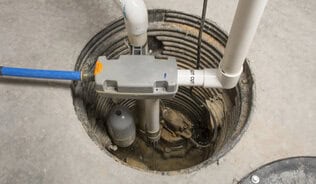Sump pumps do an awesome job in keeping us sane. They keep our homes dry and offer us a lot of convenience with just a little amount of investment in time and money.
Unfortunately, like everything else, they’re not perfect. The pumps may fail to run due to a number of reasons such as jammed impellers or loss of power. That’s why you need to back it up.
In this article, I’ll share with you the best ways how to backup sump pumps.
1. DC Backup pump
The DC backup sump pump is a pump you use as a battery backup for existing sump pumps. It’s a 12V pump that uses the energy stored in a battery to run. It can protect your basement for several hours up to a couple of days, depending on how often it needs to run.
The backup sump pump is mounted a few inches higher than the main pump and runs when the water reaches a higher level than normal.
2. Combination Sump pump

A combination sump pump simply refers to the setup where both the primary and battery backup comes in a single compact package.
The pumps are pre-assembled in a platform that makes them easier to fit into the sump pit.
The package usually includes the primary pump and the battery backup pump each with its own float switch and check valve.
It also comes with a battery box, a charger and control box for the battery, a status indicator panel, and an alarm system.
You just put the pump assembly in the pit then connect it to the discharge line and you’re done with the installation. The only downside I can think of would be the price, as you would need to pay more at once for all the added convenience.
3. Power Inverters

If the gallons per hour moved by the battery backup 12V DC sump pump is not enough, you can use a power inverter.
Using a power inverter for a sump pump will allow you to use the main sump pump in case of a power outage.
An inverter converts the DC power stored in a battery into AC power. It works like a UPS but for sump pumps since a typical UPS is not powerful enough to handle the load needed.
It’s very easy to set up, all you need to do is plug the primary pump to the inverter and the inverter to the outlet. You don’t have to do any plumbing or modifications inside the pit.
4. Water Powered Sump Pumps

Now this one is pretty interesting and quite unique. Unlike the previous ones, it uses city water which is reliable even in disasters.
Water-powered sump pumps have a float switch that opens a valve for the municipal water to flow out of a narrow nozzle when the water reaches a high level.
The pressure of the water is converted into speed, creating a low-pressure area around the jet. Water in the sump moves toward the low-pressure area and is mixed with the municipal water before being discharged.
They can move twice the amount of the municipal water that it needs to run. It’s highly reliable and can last for a very long time. In the case of long power outages, the pump will still work long after a battery backup pump would have run out of juice.
But, in return for its reliability, there are also a few disadvantages:
- It can pump less water compared to battery backup pumps
- Higher water bill when used
- It can affect water supply pressure if everyone is using it
- It can add more water to the streets
- You need to be connected to municipal water
5. Generators

The last method to backup your sump pump is by using electric generators. It’s popular thanks to how people are already familiar with how they work.
Aside from that, you can also power up your air conditioning system along with a few other appliances you need.
There is a new type of generator that uses inverter technology which is increasingly becoming popular these days.
These generators are much more quiet and fuel efficient compared to conventional types. However, they are a bit more expensive compared to their counterparts.
Wrapping up
A backup to your sump pump adds an extra layer of protection against water damage that can cause serious problems to your home. It’s a very practical addition to the primary sump pump we all have. It keeps the basement dry and our minds at complete peace, away from all the worries of a flooded home.
Here’s a short video to help further help you decide which one you want.